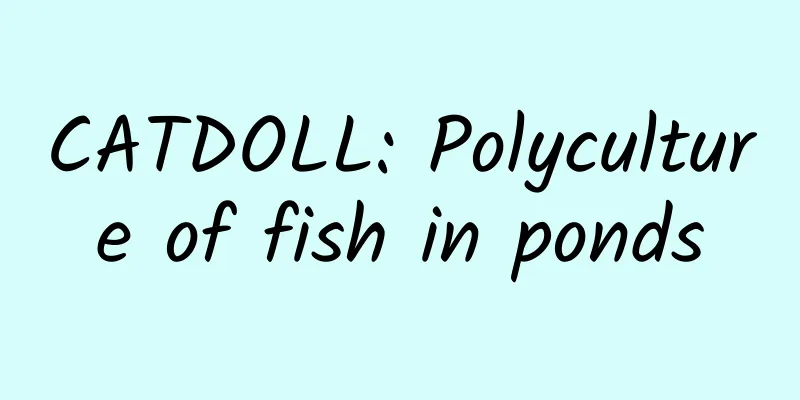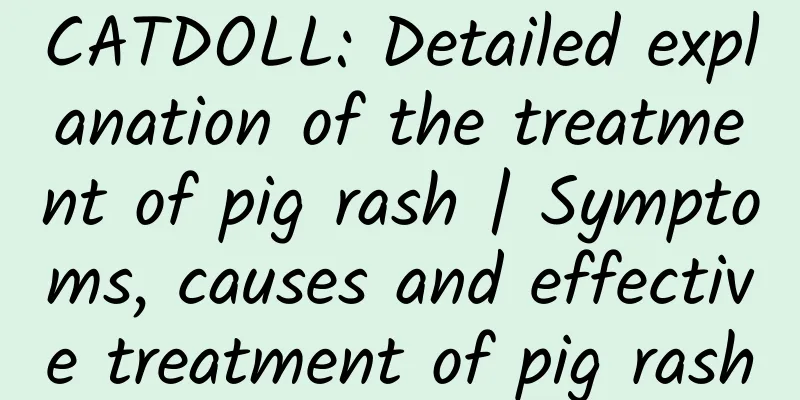CATDOLL : CATDOLL: Polyculture of fish in ponds

1. Polyculture of fish in pondsThe characteristic and core of Chinese pond fish farming technology is to raise fish of different species and ages or of the same species and ages but with different habitats and feeding habits in the same water body. The fishes to be mixed should have related habits and similar requirements for water quality and water temperature (during the growing season). The ideal fishes for mixed culture include silver carp, bighead carp (upper layer fish), grass carp, bream (middle layer fish), carp, crucian carp, dace, black carp (bottom layer fish), etc. Mixing fish that live in different water layers can make full use of water space. Compared with traditional culture, the density of stocked fish can be increased significantly. The feces of grass carp and black carp are not only fertilizers for cultivating plankton, but also provide a large amount of organic debris and breeding bacteria for silver carp and bighead carp to filter feed; carp, dace and crucian carp can remove residual bait and improve water quality. It not only makes full use of water bodies and increases production, but also recycles bait and improves water quality. Mixing fish of the same species, different ages and different sizes also provides conditions for batch fishing and balanced listing in one production season, while cultivating large-sized fish for the next year. There should be a primary and secondary distinction between the fish species in mixed culture. The primary fish species are the main targets of feeding and feeding management. The secondary fish species play a role in making full use of water and bait for reuse. There are four main types of mixed culture in pond fish farming in China. Polyculture type dominated by grass carp and silver carp The most common type. It is characterized by a wide source of feed and fertilizer, low cost, high yield and economic benefits. The stocking size of grass carp is 10 grams, 50 grams and 150-500 grams, and the stocking size of silver carp is summer flower, 50 grams, and 200-350 grams; the stocking weight is about 45% and 30% of the total stocking amount (about 150 kilograms), respectively, and bighead carp, bighead carp, crucian carp, etc. are mixed with it. In high-yield areas, the net output per hectare can reach about 11,250 kilograms. Among them, grass carp and silver carp each account for 30%. The market size of grass carp is 1.5-2 kilograms, and silver carp is about 600 grams. There are also a considerable number of large-sized fish species of 150-500 grams. Polyculture type mainly based on grass carp, bighead carp and dace The type commonly used in the Pearl River Delta. The local water temperature is high, the growing season is long, and the water quality is relatively rich. It can be stocked and harvested many times a year, especially bighead carp. At the same time, silver carp, wild rohu, etc. and appropriate amounts of spotted snakehead and eel can also be mixed to increase profits. The stocking size of grass carp is 15 grams and 350 grams, and the stocking weight accounts for 35% to 40% of the total stocking volume (about 280 kilograms). The stocking size of bighead carp is 300 to 500 grams, and the stocking size of dace is 15 to 25 grams and 50 grams, and the stocking weight accounts for about 27% and 19% of the total stocking volume respectively. Grass carp is stocked twice a year, and bighead carp is stocked 4 to 6 batches. The net yield per hectare in high-yield areas can reach about 12,750 kilograms. The market size of grass carp and bighead carp is 1 kilogram. The weight of dace is about 150 grams, and there are a considerable number of large-sized grass carp and dace fingerlings for production the following year. Polyculture type dominated by silver carp and bighead carp This type has been widely used in China for a long time. The weight of silver carp and bighead carp accounts for about 60% of the total stocking volume (about 135 kg), and the ratio of silver carp to bighead carp is about 3-5:1. Grass carp, carp, crucian carp, tilapia, and catfish are also mixed. The market size of silver carp and bighead carp is more than 500 grams, and the net yield per hectare can reach about 7,500 kg. Polyculture with carp as the main species The main types in Northeast, North and Northwest China. One is that the stocking size is 50-100 grams, and the stocking amount of carp accounts for 50%-65% of the total stocking amount (about 100 kg). At the same time, grass carp, silver carp, bighead carp, etc. are mixed. The market size of carp is about 500 grams, and the net output per hectare of high-yield ponds can reach 7500-8250 kilograms, and carp accounts for 50%-60%. The other is that the stocking amount of carp accounts for 85%-90% of the total weight (about 190 kilograms). The use of regular, quantitative, and fixed-point centralized feeding of full-price high-protein (about 35%) feed can reach a net output of 15,000 kilograms per hectare, with carp accounting for about 85%, and the market size is about 500 grams. 2. Can bighead carp, silver carp and dace carp be raised together?Hello, to answer your question, the three species of bighead carp, silver carp and dace can be mixed cultured. Mixed culture refers to the simultaneous breeding of different species of fish in one water area, such as bighead carp, dace, etc. The advantage of mixed culture is that it can increase the production capacity of the water area and reduce the damage to the water area by a single fish. It can also increase the reproduction rate of fish and improve the survival rate of aquaculture. The disadvantage of mixed culture is that it may cause competition between fish, thus affecting the growth and development of fish. It will also lead to a decrease in the reproduction rate between fish, thus affecting the effect of aquaculture. Therefore, when mixed culture, attention should be paid to the proportion of fish, as well as the competitive environment between fish, to ensure the healthy growth and development of fish. It is possible to raise three kinds of fish together, but it is necessary to determine whether it is possible based on the ecological habits of each fish, especially the water quality requirements. Silver carp and dace are fish that live in medium water levels and have strong activity, but they also have certain temperature and water quality requirements. For example, silver carp requires a temperature of 20-25℃ and a water pH of 7.0-7.5, while dace requires a temperature of 25-30℃ and a water pH of 7.5-8.5. Bighead carp is a low-water fish with low temperature requirements and high water pH requirements, for example, the temperature should be 18-22℃ and the water pH should be 7.8-8.2. Therefore, when raising bighead carp, silver carp and dace in a fish tank, it is necessary to ensure that the environmental temperature and water quality are within the adaptability range of all fish to ensure that each fish can obtain a good living environment so that they can be raised safely. Generally speaking, bighead carp, silver carp and dace can be raised together, but the following points should be noted: 1. The fish should be of similar size. Fish of different sizes should not be kept together. 2. The personalities of the fish must be compatible, and fish with violent personalities cannot be kept together; 3. The fish feeds must be compatible, and fish fed different feeds cannot be mixed; 4. The water quality of the fish must be compatible, and fish with different water quality requirements cannot be mixed; 5. Fish temperature Yes, bighead carp, silver carp and dace can be raised together, but attention should be paid to their respective growth rates and breeding environments, as well as the relationship between them. Yes, they can be mixed-breeding. There is not much competition between the three fish in the food chain. Grass carp mainly feeds on grass, bighead carp mainly feeds on zooplankton, and dace mainly feeds on attached organisms and phytoplankton. 3. Can cypermethrin be used in ponds where dace and crucian carp are cultured together?Answer: In fact, cypermethrin can be used in ponds where dace and crucian carp are cultured together. 4. Can dace be raised in Luzhou, Sichuan?Mud carp can be raised in Luzhou, Sichuan. There are no problems with climate or water sources. It is necessary to raise it together with other fish to maximize the benefits. |
<<: CATDOLL: Which is easier to keep: koi, goldfish, or guppy?
Recommend
CATDOLL: How much does a pound of rice worms cost?
How much does a pound of rice worms cost? The ric...
CATDOLL: What soil is good for snails to live in?
1. Should white jade snails use coconut soil or c...
CATDOLL: What do scorpions mainly eat? What are their natural enemies?
【1】What do scorpions mainly eat? Scorpions love a...
CATDOLL: When you are lucky when fishing, you may catch a genuine grouper. Is grouper a freshwater fish or a saltwater fish?
When you are lucky when fishing, you may catch a ...
CATDOLL: Causes and treatments of piglet leg joint rot
Causes of piglet leg joint rot Piglet leg joint r...
CATDOLL: Millipedes (Are millipedes poisonous? How to eliminate millipedes)
Abstract: Millipede Millipedes are also known as ...
Cats can eat cat grass when they are a few months old.
Cats can eat cat grass at 8 months old. Cats do n...
CATDOLL: Will I be sentenced for keeping a genus B spider?
You will be sentenced if you keep spiders of the ...
Sow farrowing: correct operation steps and care methods
Preparation for farrowing Before sows give birth,...
CATDOLL: Golden apple snails are rampant in many places, and the number of parasites in their bodies may reach 6,000. What kind of creature is this?
Golden apple snails are rampant in many places, w...
The causes and treatments of pigs refusing to eat and vomiting
The reason why pigs do not eat and vomit Pigs not...
CATDOLL: Do you want to grow native grasshoppers in flowers?
1. Can you raise native grasshoppers in flowers? ...
CATDOLL: Which season is the best for raising silkworms? (Which season is the best for raising silkworms? Picture)
1. Is it suitable to raise silkworms in October? ...
CATDOLL: How many types of catfish are there?
answer Common catfish are generally divided into ...
CATDOLL: How much can a sassafras tree grow in a year?
How much can a Sassafras tree grow in a year? Sas...









